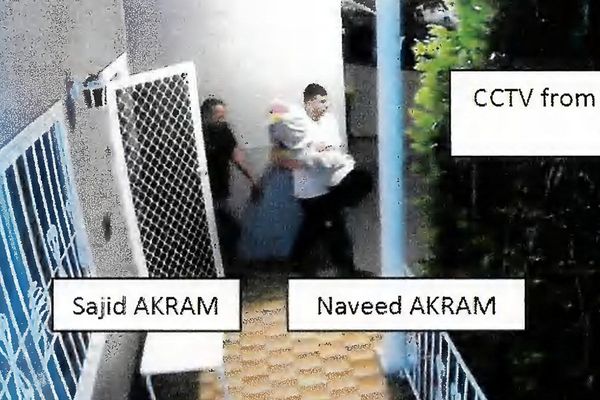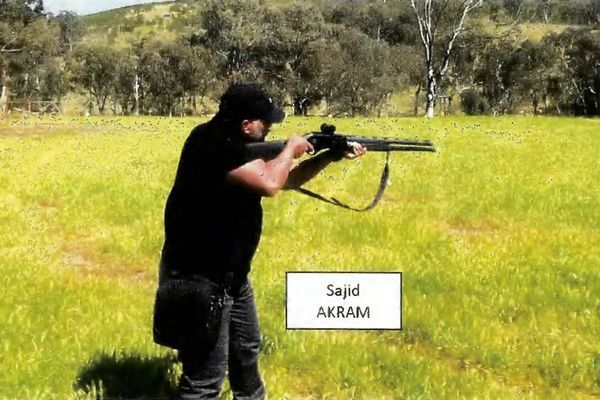
Donald Trump’s envoy Steve Witkoff has visited Gaza and been shown one of the controversial food distribution sites around which hundreds of Palestinians have been killed by Israeli forces.
Witkoff, the US president’s special envoy for the Middle East, had earlier met the Israeli prime minister, Benjamin Netanyahu, amid mounting international horror over conditions of starvation in Gaza occurring after months of Israeli-imposed aid restrictions.
Witkoff – a former real estate lawyer with no background in foreign policy or humanitarian aid – wrote on X that he had spent more than five hours inside Gaza in order to gain “a clear understanding of the humanitarian situation and help craft a plan to deliver food and medical aid to the people of Gaza”.
Chapin Fay, a spokesperson for the Israeli and US-backed Gaza Humanitarian Foundation (GHF), said the visit reflected Trump’s understanding of the crisis and that “feeding civilians, not Hamas, must be the priority”.
The apparent absence of senior international aid officials during a visit accompanied by senior Israeli figures raises questions over the credibility of Israeli and US plans to increase aid flows amid the continuing debacle around the GHF operations.
Trump echoed his intention to increase aid reaching Gaza in a phone call with the US news site Axios, saying: “We want to help people. We want to help them live. We want to get people fed. It is something that should have happened long time ago.”
It remains unclear whether Trump intends to double down on an expansion of the GHF operations or envisages a new way of doing things.
Hours after Witkoff’s visit to the site in Rafah, Palestinian medics said they received the bodies of 13 people shot dead by Israeli forces while trying to get aid, including near the site that US officials visited. GHF denied anyone was killed at their sites on Friday.
Witkoff visited as Human Rights Watch described the sites run by the GHF as “death traps” which had become the scene of regular “bloodbaths”. The UN has said that Israeli forces have killed almost 900 Palestinians who were attempting to reach the sites.
Belkis Wille, the associate crisis and conflict director at Human Rights Watch, said on Friday: “US-backed Israeli forces and private contractors have put in place a flawed, militarised aid distribution system that has turned aid distributions into regular bloodbaths.”
She added: “Israeli forces are not only deliberately starving Palestinian civilians, but they are now gunning them down almost every day as they desperately seek food for their families.”
The UN said on Friday that Israeli forces had killed 1,353 Palestinians who were waiting for food – 859 around GHF sites and another 514 along the route of UN aid convoys.
The health ministry in Gaza said that 83 people had been killed and 554 wounded by IDF fire in the territory in the past 24 hours.
According to the announcement, 53 were killed and more than 400 were wounded while seeking humanitarian aid.
A UN spokesperson said Israeli policies had led to the widespread desperation in Gaza that meant arriving UN trucks were overwhelmed and stripped before they could reach warehouses.
The UN says longstanding Israeli restrictions on the entry of aid has created an unpredictable environment, and that means, while a pause in fighting might allow more aid in, Palestinians are not confident aid will reach them.
Olga Cherevko, a spokesperson for the UN Office for the Coordination of Humanitarian Affairs (Ocha), said: “This has resulted in many of our convoys offloaded directly by starving, desperate people as they continue to face deep levels of hunger and are struggling to feed their families. The only way to reach a level of confidence is by having a sustained flow of aid over a period of time.”
While a number of countries have resumed airdrops of aid into Gaza in recent days, aid experts have warned that the amount of food that can be dropped by air is insufficient to counter starvation inside the Palestinian territory.
On Friday, Hamas released a brief video of an emaciated and bearded Israeli hostage held in a narrow concrete tunnel in Gaza. Israeli media identified as Evyatar David, who was seized at the Nova music festival on 7 October 2023.
Of the 251 hostages taken during the Hamas attack, 49 are still being held in Gaza, including 27 the Israeli military says are dead.
Israeli officials have said that if there is no progress in the coming days on a deal with Hamas to release the hostages, Israel will expand its operations in Gaza.
International humanitarian agencies and experts say that famine has gripped Gaza after Israel blocked food from entering the territory for two and a half months starting in March.
Since it eased the blockade in late May, Israel has only allowed in a trickle of aid trucks for the UN, about 70 a day on average, according to Israel’s own figures. That is far below the 500-600 trucks a day that UN agencies say are needed – the amount that entered during a six-week ceasefire earlier this year.
While Netanyahu and other officials have claimed that there is “no hunger in Gaza” or that it is the fault of Hamas looting or the UN’s failings, incontrovertible evidence has been offered by the UN’s food security monitor of the spread of famine amid Israel’s choking of the entry of aid, a policy critics say amounts to the crime of using starvation as a weapon.







